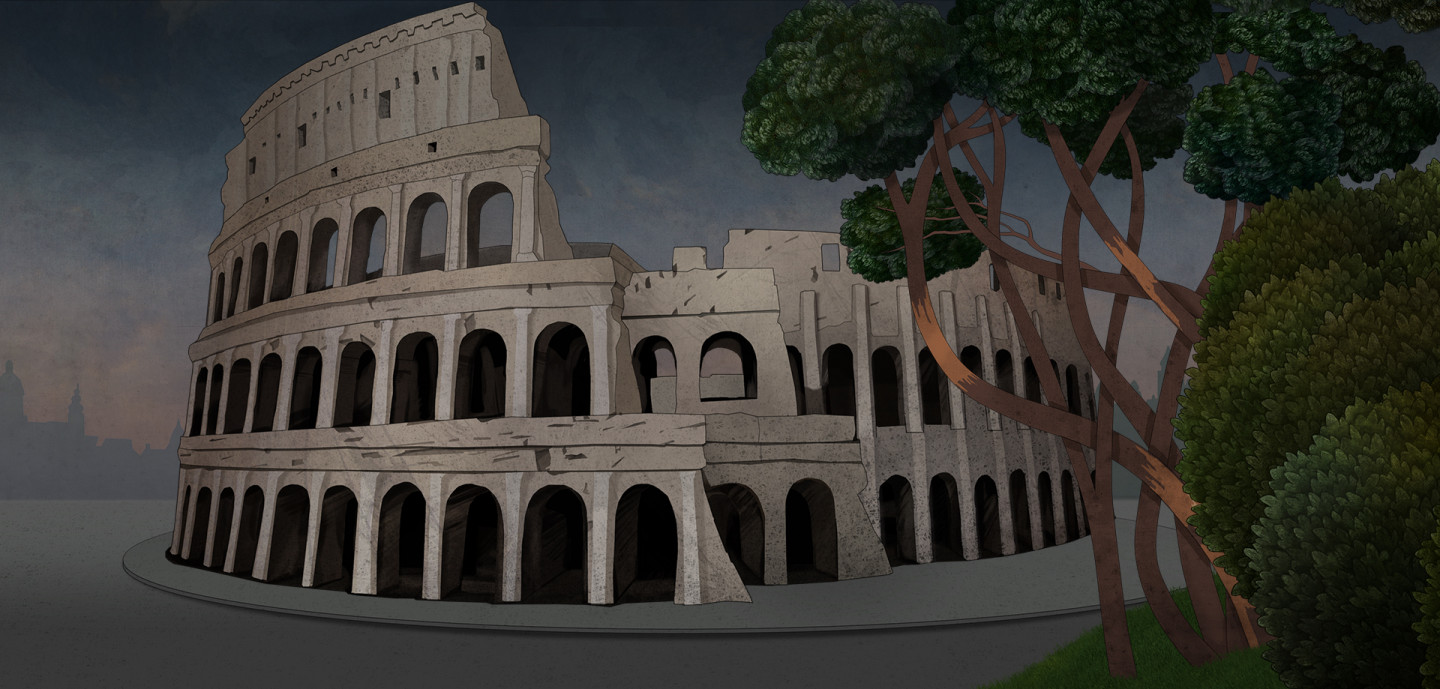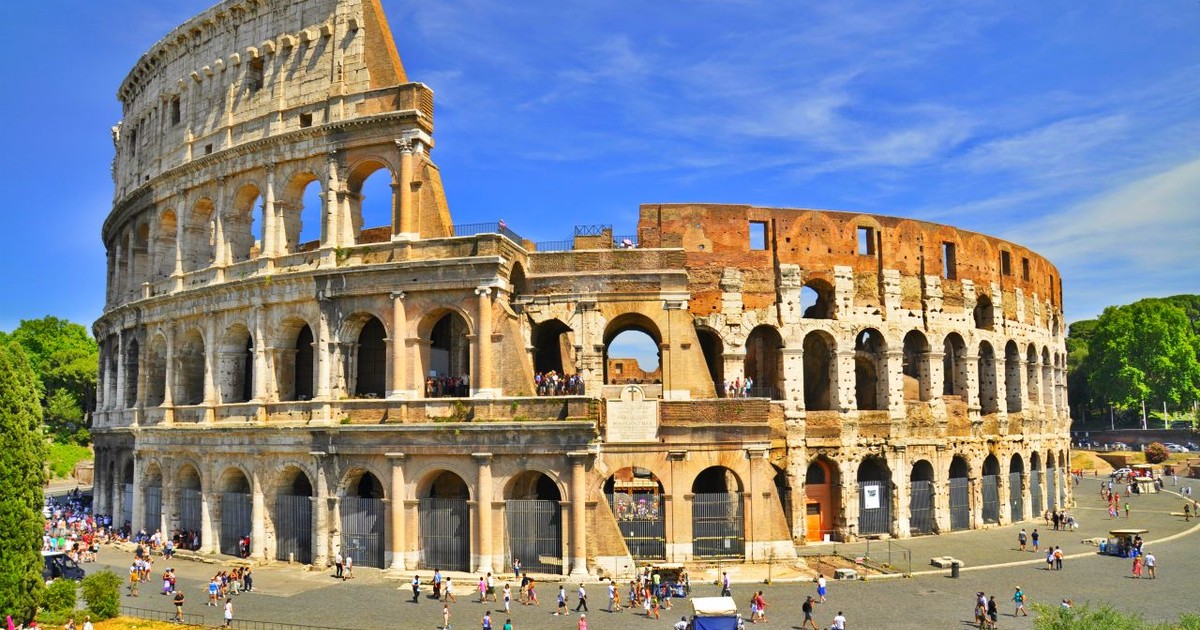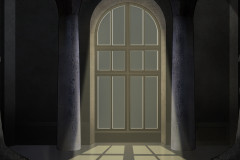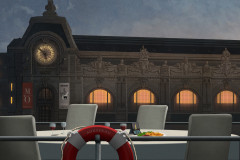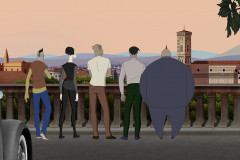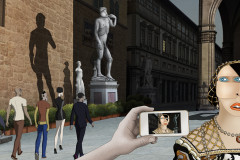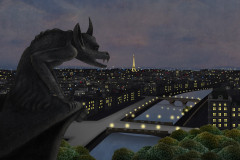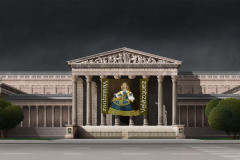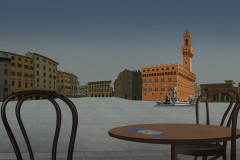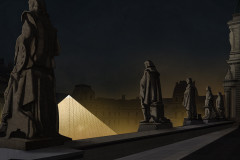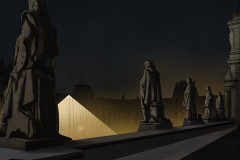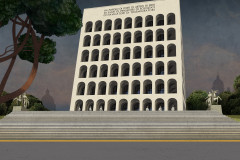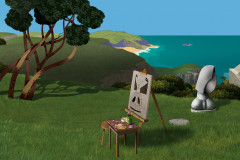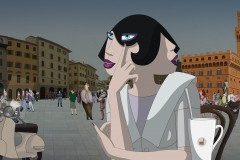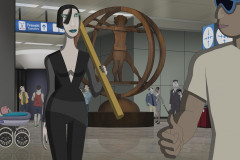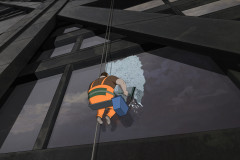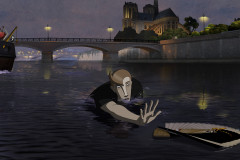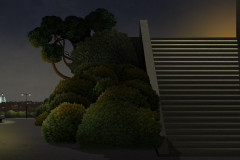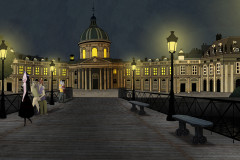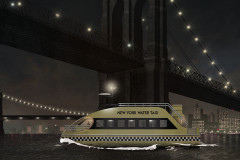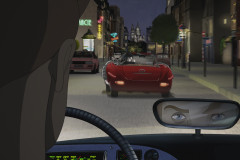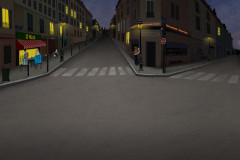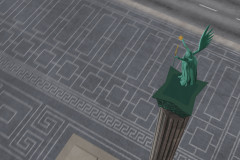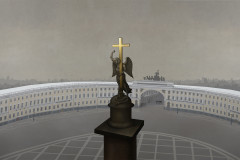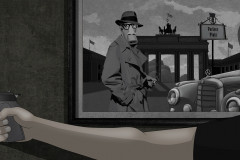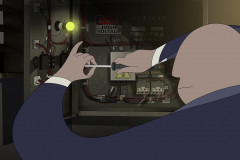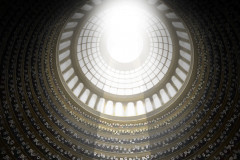„Amíg a Colosseum áll, állni fog Róma, ha elpusztul, elpusztul Róma és a világ is.” –írta Szent Béda az emblematikus építményről.
Bár valóban kolosszális méretű, a Colosseum a nevét a korábban előtte álló hatalmas Nero-szoborról kapta. Funkcióját tekintve amphitheatrum, vagyis gladiátor küzdelmeket rendeztek itt, ez volt a „császárok játszótere”. Építését a Flaviusok rendelték meg (emiatt a neve hivatalosan Amphitheatrum Flavium), Vespasianus uralkodása alatt kezdték el 72-ben, és Titus avatta fel látványos ünnepség sorozattal 80-ban.
Ezt nyilván a közönség jobban élvezte, mint a gladiátorok vagy az az 5000 vadállat, aki szintén az arénába lépett az ünnepélyes megnyitón. Pedig a többszintes nézőtéren 50-70.000 ember is elfért, ez a mai futball stadionok esetében is szép szám! Panem et circenses –azaz kenyeret és cirkuszt! Ez kellett a római népnek! A szórakozásnak köszönhetően a magas adókkal is megbékéltek. A Colosseum alaprajza elliptikus: ezt két félköríves görög színház „szembeforgatásával” találták ki. A küzdőtér alatt bonyolult járatok és emelők juttatták a megfelelő helyre a gladiátorokat. Az arénát hatalmas nézőtér övez. Az épületben lenyűgöző és egyébként nagyon modern lépcső- és folyosó rendszer segítette a vendégeket, hogy mindenki megtalálja a helyét. Tűző napsütés esetén kihúzható napernyők (velarium) biztosítottak árnyékot a nézőknek. A Colosseum mészkő homlokzatát az árkádívek határozzák meg: legalul dór, felette ión, legfelül korinthoszi féloszlopok tagolják.
A Colosseum kétszer tűnik fel a filmben: egyszer, amikor a csapat a bisevói főhadiszállásukról elsőként Rómába repülnek. Az amphitheatrum itt az olasz főváros ismertetőjele, hogy mindenki beazonosíthassa a helyszínt. Másodszor Marina lakásának ablakából látjuk a kivilágított Colosseumot. Marina elég fancy helyen lakhat, ilyenből csak néhány tucat lehet a világon!
Colosseum
“As long as the Colosseum stands, Rome will stand; when it falls, so will Rome—and the world,” wrote Saint Bede of this iconic structure.
Although truly colossal in scale, the Colosseum owes its name not to its size, but to a massive statue of Nero that once stood nearby. Functionally, it’s an amphitheatrum—a venue for gladiator games, the “playground of the emperors.” Commissioned by the Flavian dynasty (hence its official name, Amphitheatrum Flavium), construction began under Emperor Vespasian in 72 CE and was inaugurated by Titus in 80 CE with a spectacular series of festivities.
No doubt the crowd enjoyed the spectacle more than the gladiators—or the 5,000 wild animals brought into the arena for the grand opening. The multi-tiered stands could accommodate 50,000 to 70,000 spectators—impressive even by modern stadium standards! Panem et circenses—bread and circuses—was the formula to keep the Roman people content, even with heavy taxes. The Colosseum’s elliptical plan was inspired by placing two semicircular Greek theaters back to back. Beneath the arena lay a complex system of tunnels and lifts that delivered gladiators and animals to the battleground. Surrounding the arena was an immense grandstand. The building’s sophisticated network of stairs and corridors—highly advanced for its time—helped guests efficiently find their seats. On sunny days, retractable canvas awnings (velarium) provided shade for the audience. The limestone façade is marked by a series of arcades: Doric columns at the base, Ionic above, and Corinthian on the top tier.
The Colosseum appears twice in the film. The first time is when the team flies to Rome from their Bisevo headquarters—it serves as a clear visual cue to identify the Italian capital. The second time, we glimpse the illuminated amphitheater from Marina’s apartment window. Clearly, she lives in a very fancy place—there can’t be more than a few dozen homes in the world with that kind of view!






